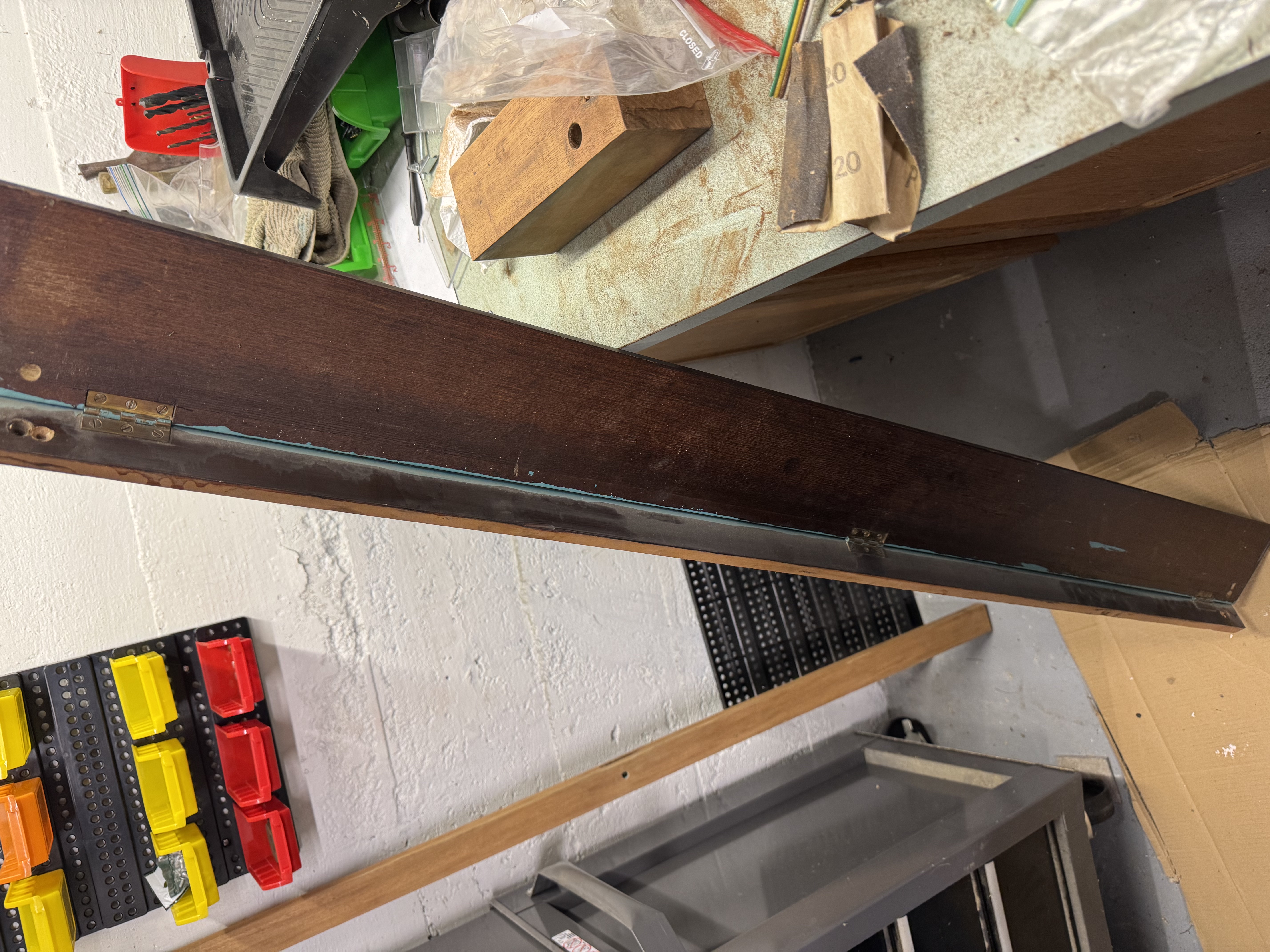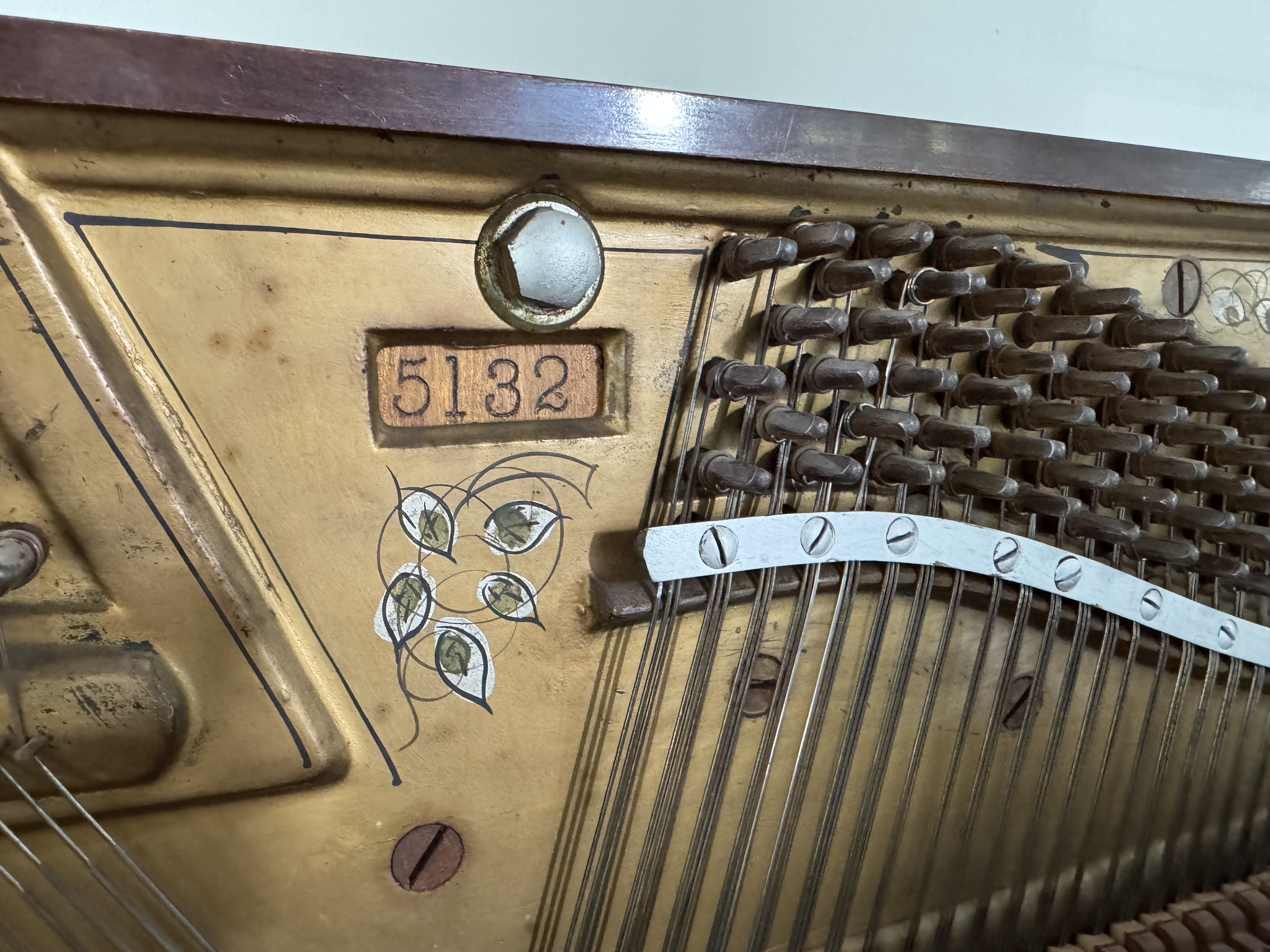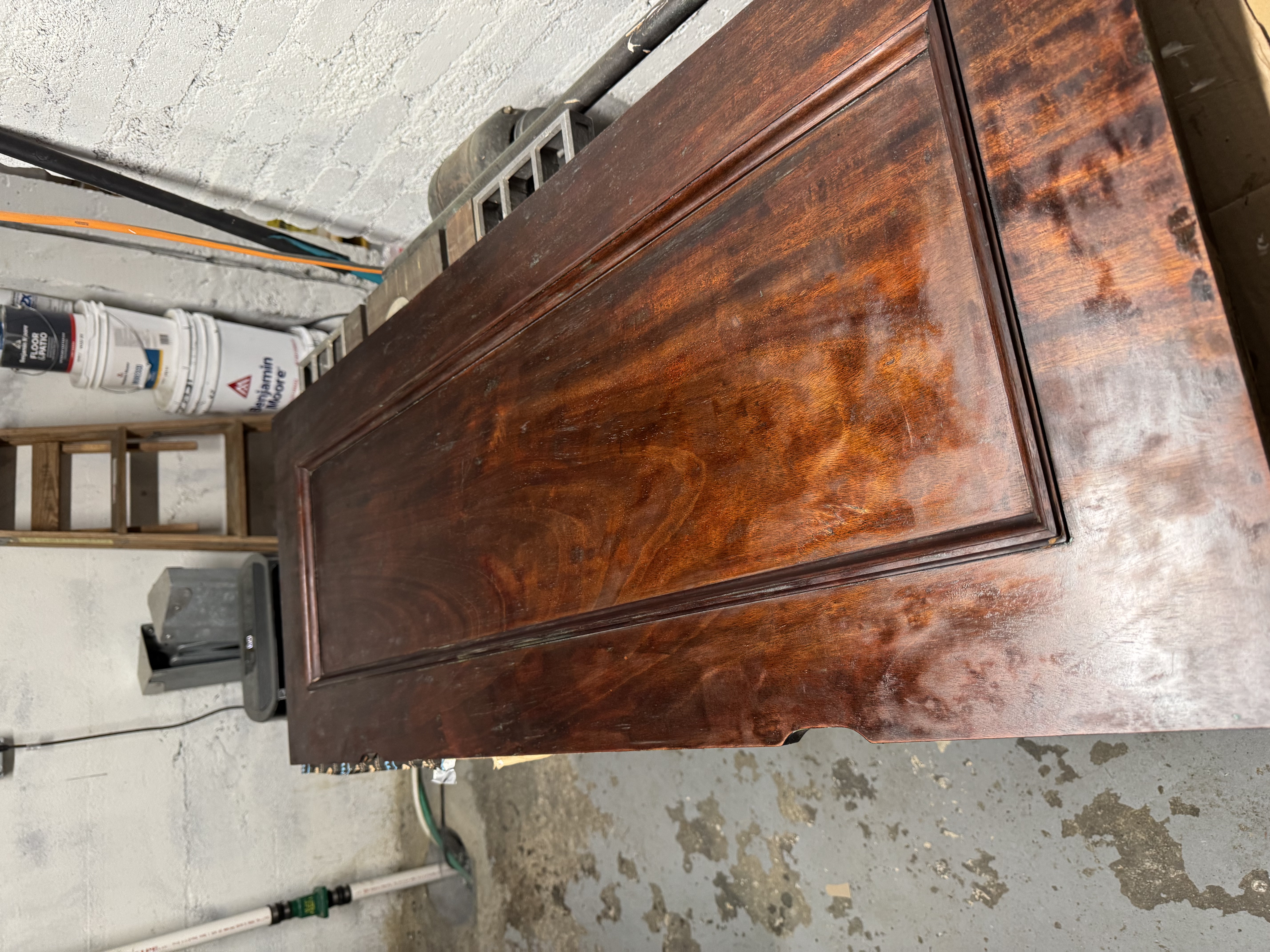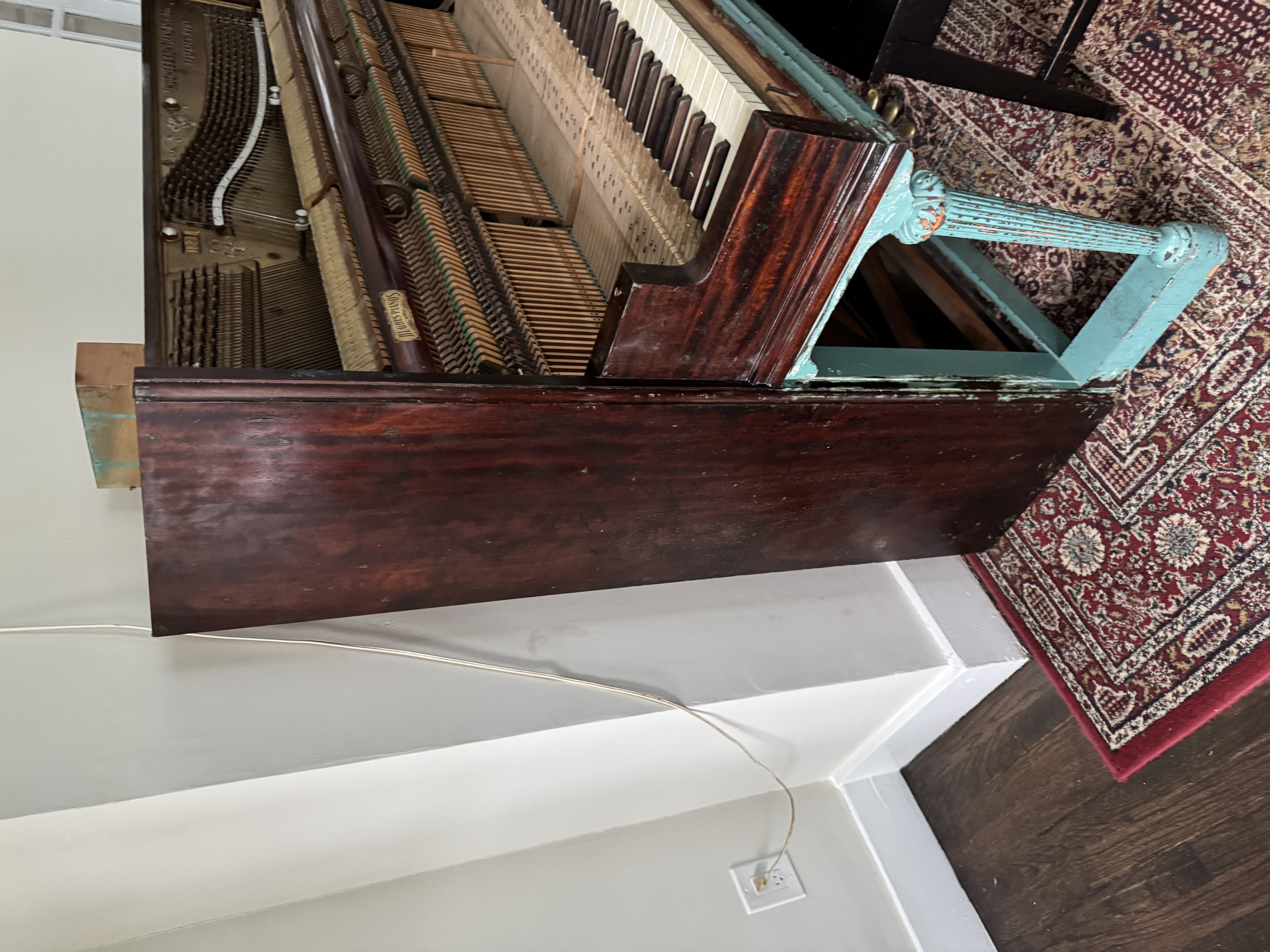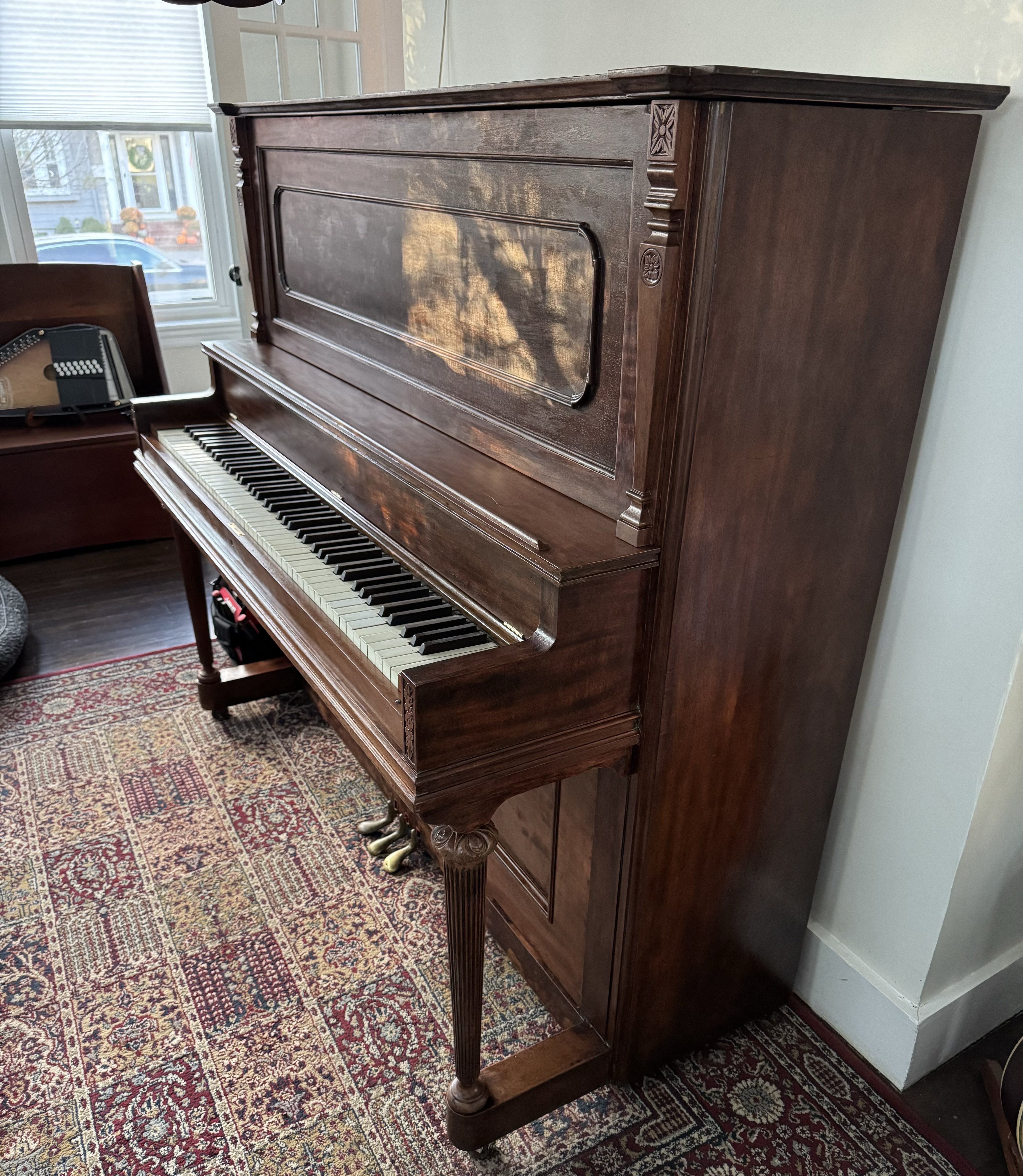In the mid-1990s we were living in Lunenburg, Massachusetts with a growing family. My wife and I both grew up with a piano in the house and we were looking to find an inexpensive piano to share as a family. We ended up finding a decent early 1900s upright piano for $100 in Winchendon. We transported it back to our house in Lunenburg on a utility trailer borrowed from my father and we got a couple of neighbors to help lug it into the house.
While the green color had a lot of character, I saw the original wood finish on the inside of the piano and I got the idea in my head to try and refinish it by removing the paint and exposing the original wood at some point. I didn’t get around to it for 25 years, but after our move to Watertown in late 2023 I decided to take on the task of refinishing the piano.
I started by doing some research into painted piano refinishing approaches and they were divided between sanding and stripping approaches. The folks recommending stripping all liked an environmentally friendly paint removing compound called CitriStrip. Another common recommendation was to take as much of the piano apart as possible to allow for much of the refinishing to take place in a controlled, workshop atmosphere.
As I removed the pieces, I took some pictures to remnid me how I should reassemble when the time came. This turned out to be very useful towards the end of the project.
The inside of the piano has some really nice details. There are small paintings of flowers and the manufacturing company is listed as Hughes & Son Piano Piano Manufacturing Company based in Foxcroft, Maine which seems to have been in operation from 1866 through 1921.
I started out doing a combination of sanding and stripping, but eventually switched over to using CitriStrip as the first step for everything. Removing all of the paint with an orbital sander was difficult to control for depth, even for completely flat pieces. Depth was pretty important given that most of the pieces had a relatively thin laminate that needed to be preserved.
The CitriStrip process involved applying the pink goo liberally to the surface, then covering with plastic wrap to keep it from drying out quickly and leaving it overnight to do its job. The next day I scraped off the resulting mix of stripper and broken down paint and varnish to get the surface as clean as possible. Depending on the success I would either applied additonal stripper or did some sanding to remove the undisolved spots.
Once the surface was sanded, I applied a Valspar wood stain with a the color designation Honey with a rag, rubgging it in to get an even hue. Once that was dry, I applied two or three fairly light layers of water-based polyurethane.
I was really happy with how the final look came out. There was some difference in color for parts that had different types of wood, but the result is something that looks great with our house’s stained hardwood floors and, as usual, I learned a great deal about refinishing and the details of our piano.

